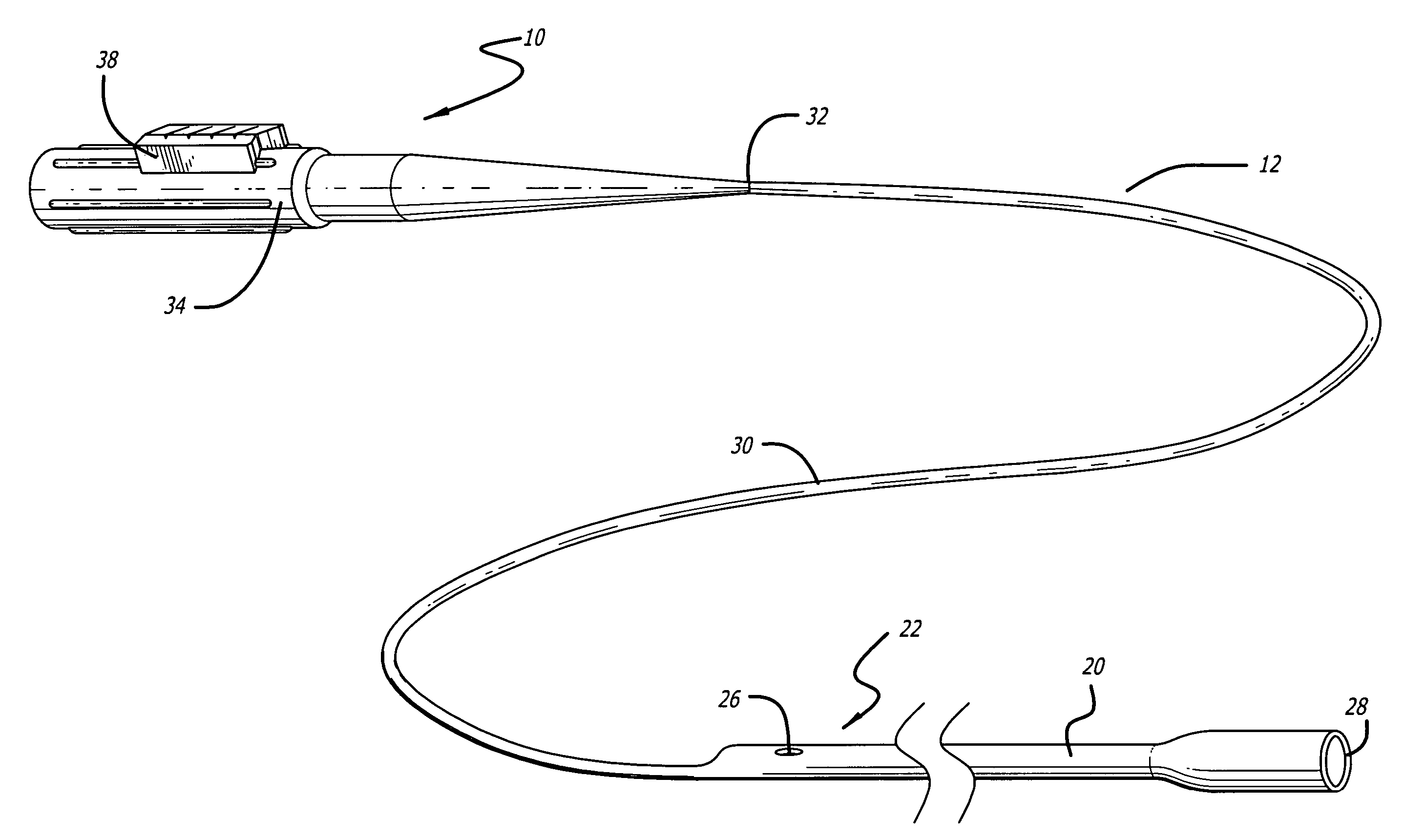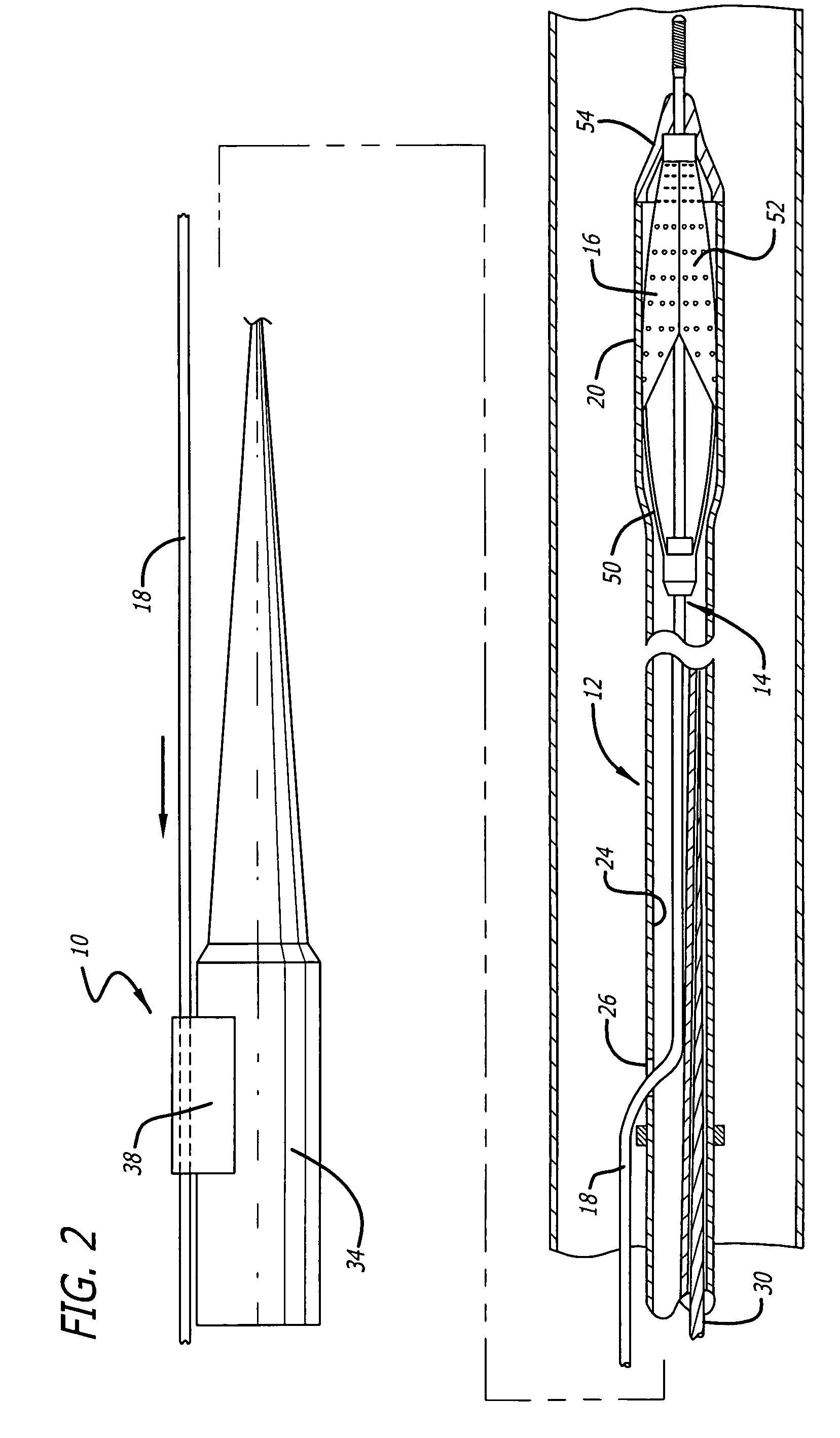Guide wire locking mechanism for rapid exchange and other catheter systems
- Summary
- Abstract
- Description
- Claims
- Application Information
AI Technical Summary
Benefits of technology
Problems solved by technology
Method used
Image
Examples
Embodiment Construction
[0020] Turning now to the drawings, in which like reference numerals represent like or corresponding elements in the drawings, FIGS. 1 and 2 illustrate a locking mechanism 10 used with a recovery catheter 12 which incorporate features of the present invention. This recovery catheter 12 is adapted for use with a medical device such as an expandable embolic filter device 14 designed to capture embolic debris that may be created and released into a body vessel during an interventional procedure. The recovery catheter 12 and locking mechanism 10 can be used to recover the filtering portion 16 of the embolic filter device 14 while holding the guide wire 18 in place to prevent relative movement between the recovery catheter 12 and guide wire 18 as these devices are being simultaneously retrieved from the patient.
[0021]FIGS. 1 and 2 show a particular embodiment of a recovery catheter 12 that utilizes rapid-exchange technology to allow for quick advancement along the guide wire 18. The rec...
PUM
 Login to View More
Login to View More Abstract
Description
Claims
Application Information
 Login to View More
Login to View More - R&D
- Intellectual Property
- Life Sciences
- Materials
- Tech Scout
- Unparalleled Data Quality
- Higher Quality Content
- 60% Fewer Hallucinations
Browse by: Latest US Patents, China's latest patents, Technical Efficacy Thesaurus, Application Domain, Technology Topic, Popular Technical Reports.
© 2025 PatSnap. All rights reserved.Legal|Privacy policy|Modern Slavery Act Transparency Statement|Sitemap|About US| Contact US: help@patsnap.com



